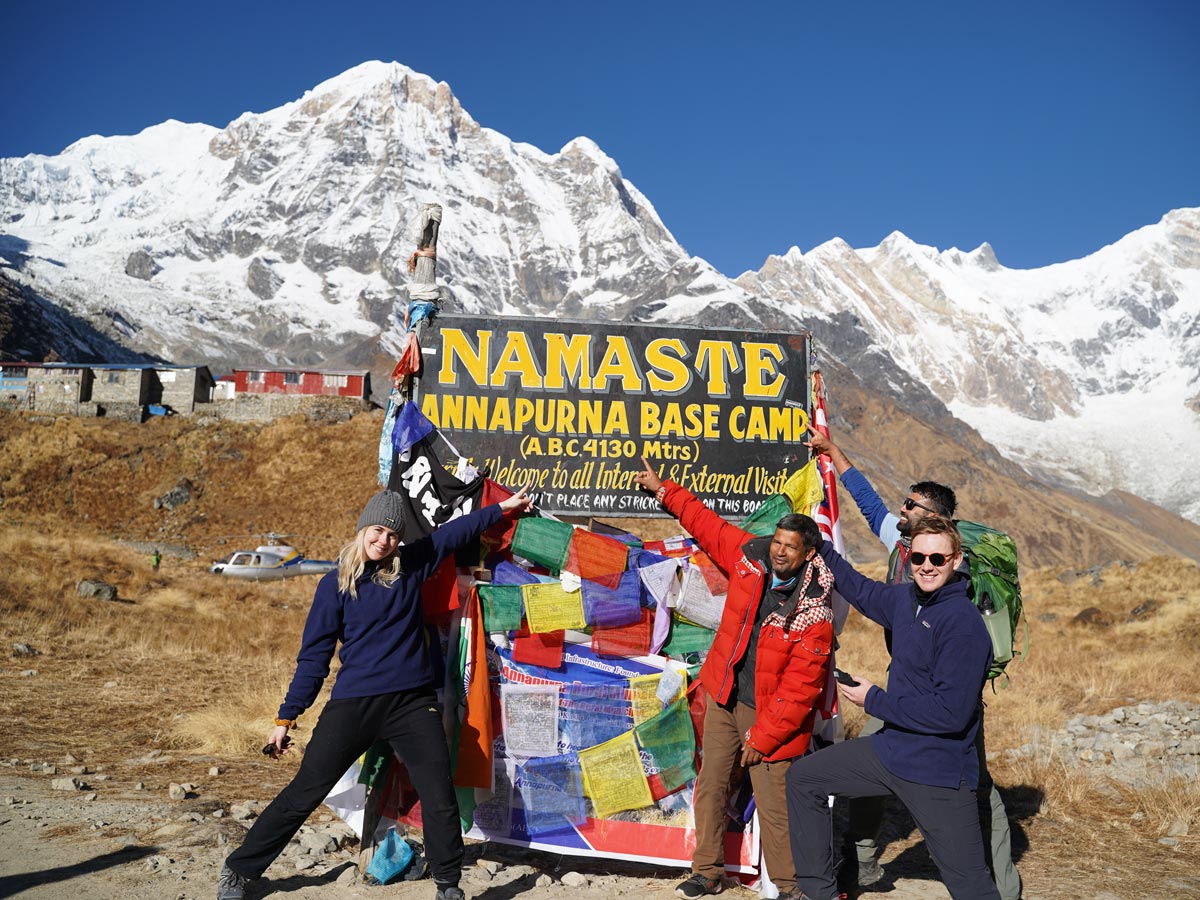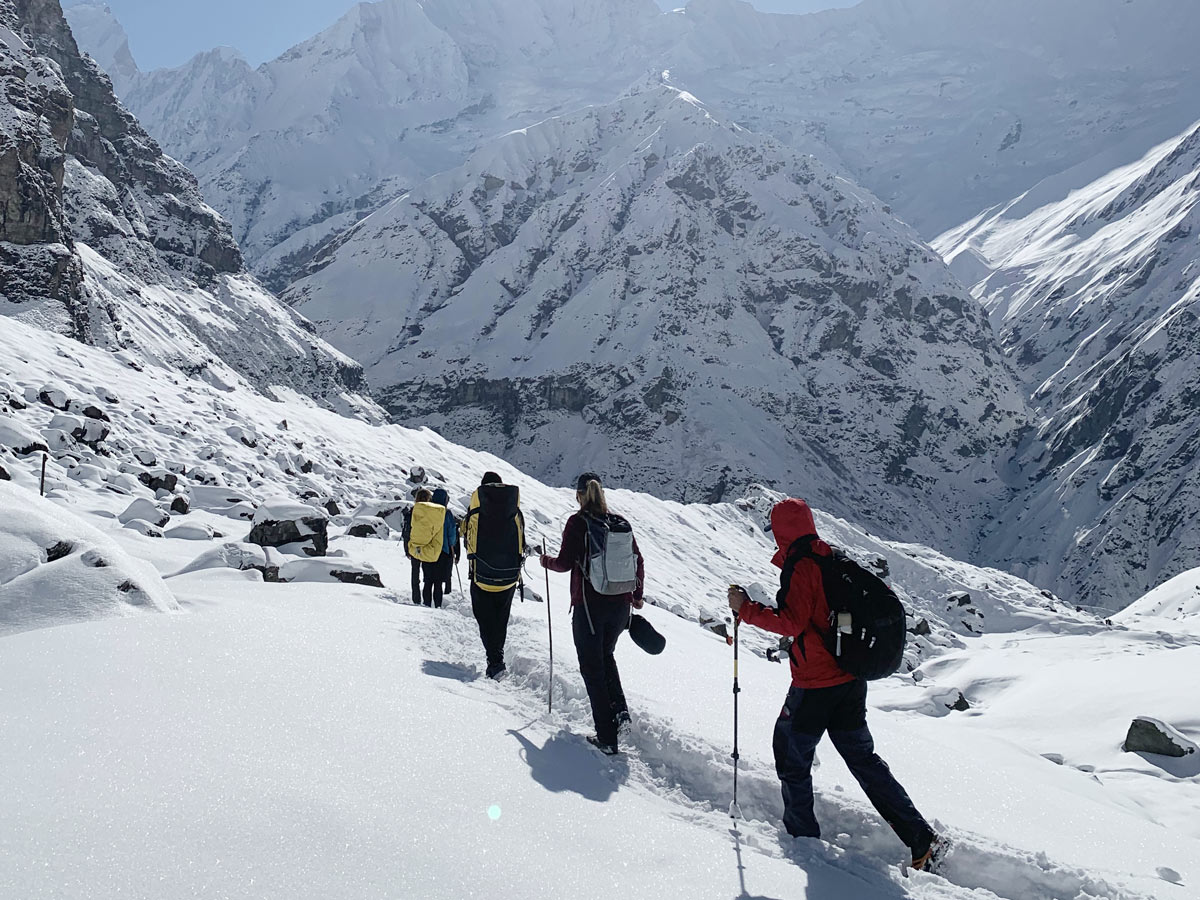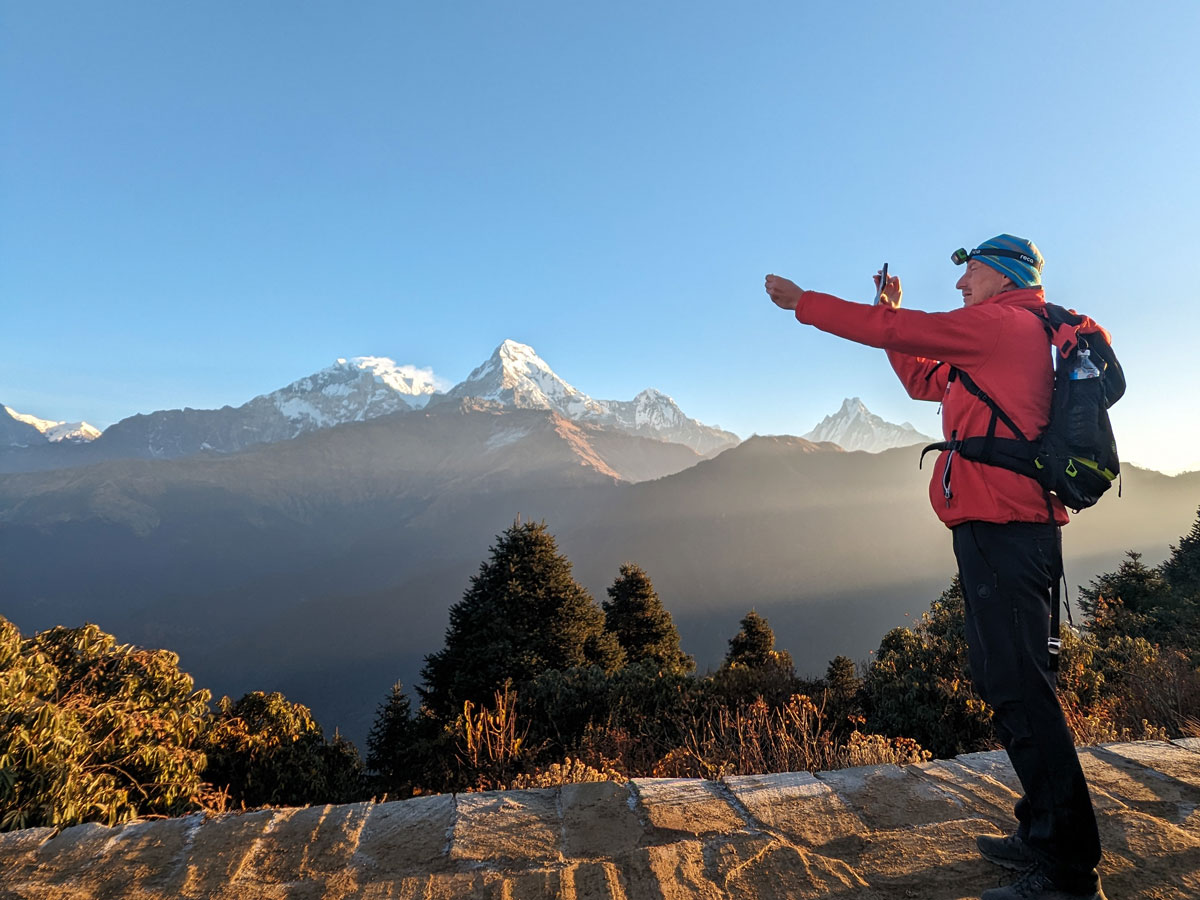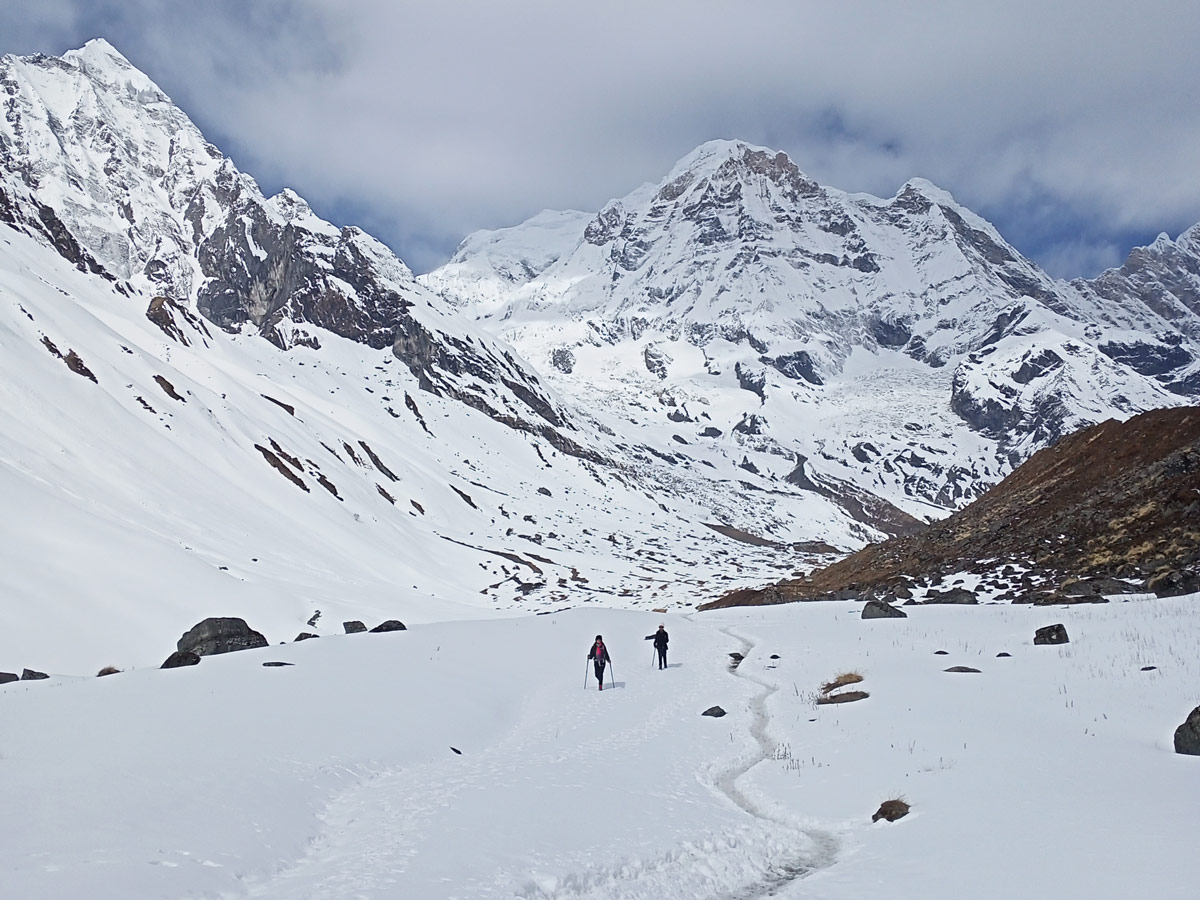The Annapurna Base Camp trek is an amazing adventure with stunning views and unforgettable moments. Whether you’re new to trekking or a pro, I’ve got some important tips to make sure your journey to ABC is not just memorable but safe and fun.
Each step you take amidst the majestic Himalayas offers not just physical challenges but a chance to connect with nature’s splendor. The trails unfurl panoramas that humble the soul and challenge the spirit.
The soaring peaks, vibrant rhododendron forests, and the connections among fellow trekkers create a beautiful collection of experiences that go beyond the usual.
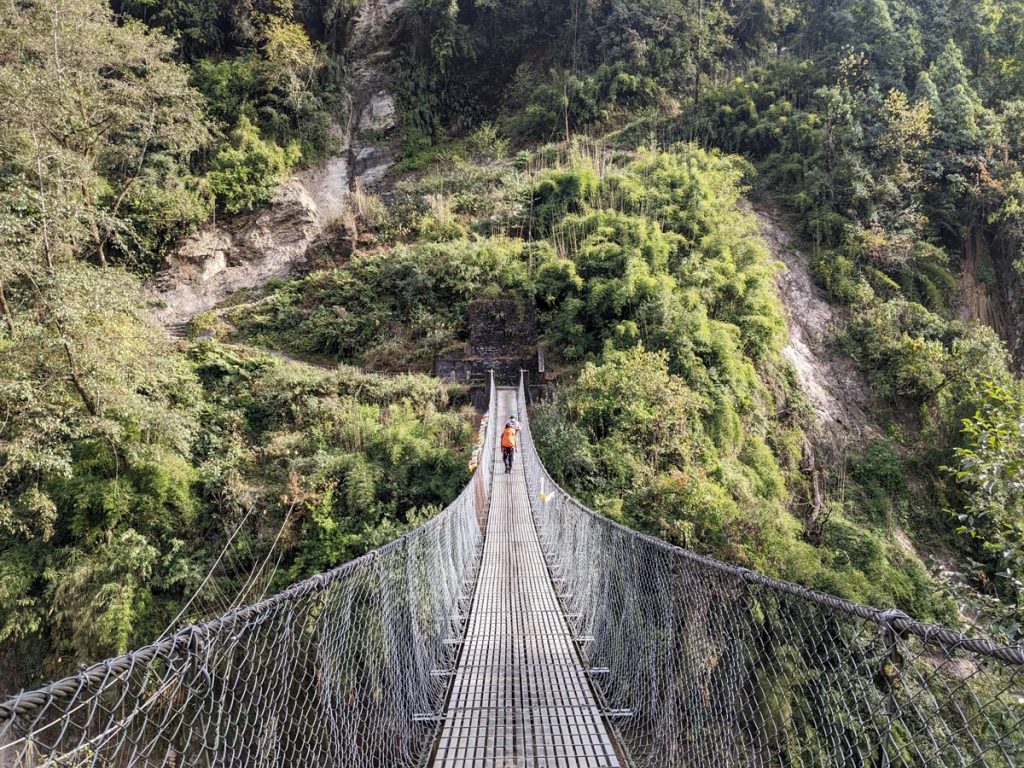
It’s not merely about conquering heights but embracing the whispers of the winds, the stories of the trails, and the warmth of the locals’ hospitality.
The Annapurna Sanctuary trek holds a trove of experiences waiting just for you. In this guide, I’ve gathered a few essential tips to ensure your trek isn’t just a checklist of sights but a secure and thrilling adventure.
These tips are your compass, navigating you through safety, joy, and a touch of trekking finesse. Each tip here acts as your trusted companion, paving the way for an unforgettable journey to Annapurna Base Camp.
1. Physical Preparation:
Before embarking on the trek, prioritize physical fitness. Train for at least 2 months before your trek starts. Engage in cardiovascular exercises, strength training, and endurance-building activities, and practice extended walks to condition your body for the uphill and downhill challenges of the trek.
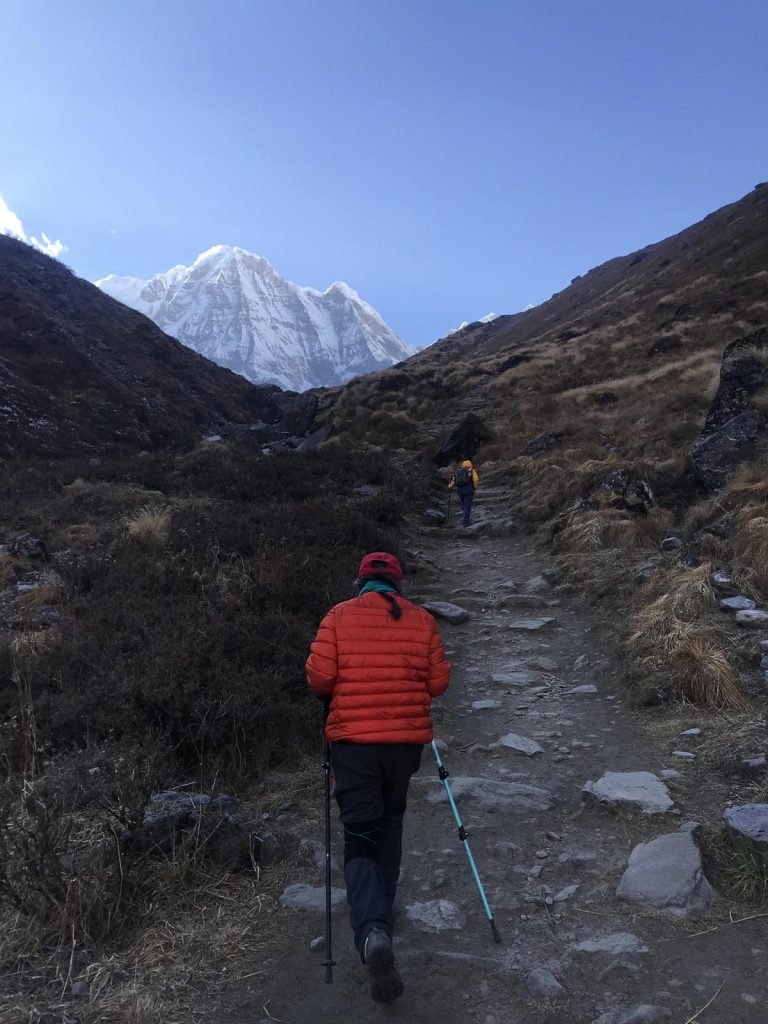
Go on practice hikes that can specifically help you get used to the varied terrain you’ll encounter. These preparatory walks serve as invaluable training, allowing you to acclimate to different landscapes, varying elevations, and the challenges of the trail.
For more details, please go through this blog: How to Prepare for Annapurna Base Camp Trek?
2. Pack Wisely:
Choose comfortable and well-broken-in trekking boots. Pack suitable layers of clothing, including a high-quality down jacket.
Also, opt for a well-made backpack that is packed efficiently to save space and keep things organized for your trekking adventure. For winter treks, insulating layers are vital.
Bring along a sturdy pair of trekking poles adds stability on uneven terrains, easing the burden on your joints as it acts as your third leg.
Consider this smart hack: alternate your entire outfit every other day to minimize clothing without compromising freshness. This ensures a lighter load and maximizes the use of your clothing items.
3. Hydration and Nutrition:
To stay energized during your trek, keep hydrated by consistently drinking water and fluids. Carry a versatile, reusable water bottle designed for both hot and cold beverages. This choice not only supports sustainability but also eliminates the need for single-use plastic.
Maintain your energy levels by enjoying balanced meals packed with carbohydrates, proteins, and healthy fats.
Quick tip: If you’re using dietary supplements, take them before bedtime. Avoid taking any medications during the daytime to ensure a comfortable and uninterrupted trekking experience.
4. Walk slow to acclimatize properly:
Take your time ascending, it’s essential to move at a pace that matches your fitness level. Take your time and find a steady rhythm that feels comfortable for you.
Don’t hesitate to pause and take breaks whenever needed; these moments let you catch your breath and recharge. It’s crucial to listen to your body – it gives signals about how it’s feeling.
Acclimatizing gradually to the altitude is key; it helps your body adjust to the change in elevation and reduces the risk of altitude sickness.
So, as you climb, take it slow, find your pace, rest when necessary, and let your body adapt naturally to the increasing altitude.
5. Choose the right season:
The best times for the ABC trek are spring (March to May) and autumn (September to November) when the weather is generally more stable.
Prepare for unpredictable weather conditions by carrying waterproof gear and dressing in layers. Be aware of changing weather patterns in the Himalayas.
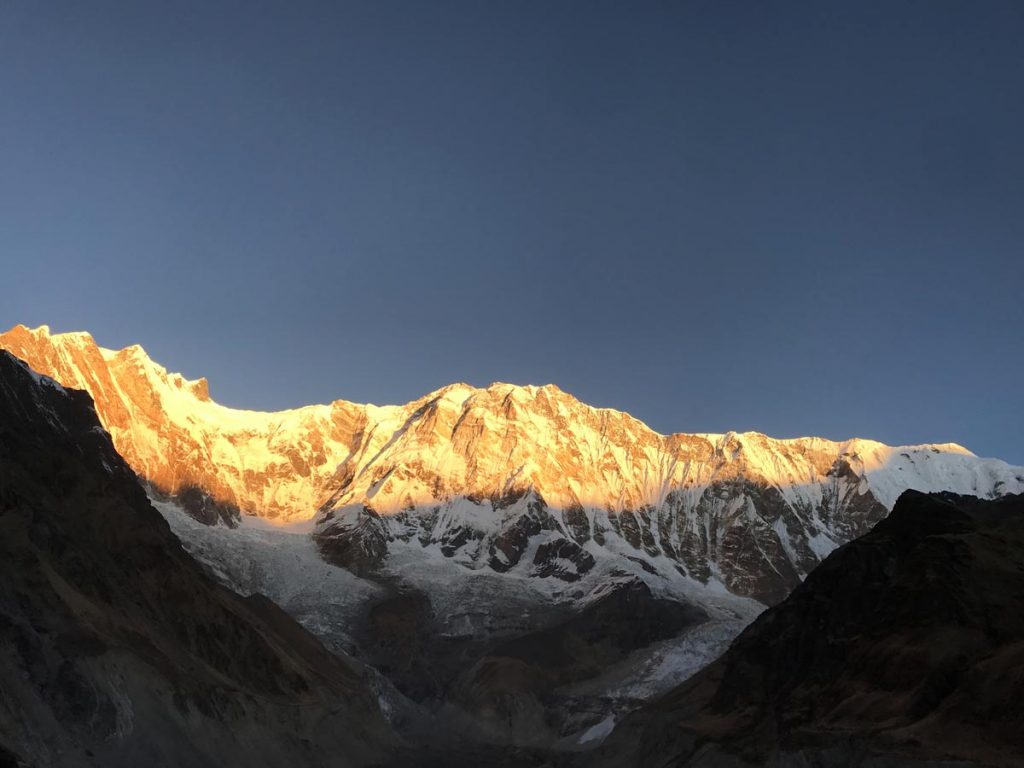
If you’re up for a snowy trail, December and January are still viable options with additional gear like crampons and warm sleeping bags.
6. Safety first:
Carry a comprehensive first aid kit equipped with bandages, antiseptic wipes, blister plasters, pain relief medication, and any personal prescription medications.
Familiarize yourself with basic first aid techniques for common trekking injuries like blisters, minor cuts, sprains, and altitude-related symptoms.
Be prepared to address minor injuries promptly and seek immediate professional medical assistance for more severe conditions or emergencies.
7. Communication Devices:
Carry a fully charged mobile phone, cameras and consider portable chargers or solar-powered devices for charging.
Make sure you update your well-being during your trek with your loved ones back home, stay in contact with your fellow trekking partners, and do not forget to capture beautiful memories to connect later with your future self.
8. Secure Teahouse Reservations in Advance
Securing teahouse accommodations becomes essential, particularly for solo trekkers during the peak seasons of Spring and Autumn.
Given the high demand during these main trekking periods, it’s advisable to make advance reservations to ensure availability.
Opting for an experienced trekking company is a wise decision. Entrusting your trek to a reputable company not only offers peace of mind but also ensures that every aspect of your journey is expertly handled by seasoned professionals.
9. Always Carry Cash
Make sure to have cash on hand, especially in remote areas where card facilities may be limited or unavailable. ATMs are sparse to non-existent on the trail, making it essential to carry sufficient Nepali rupees.
Cash is king when it comes to purchasing drinks, snacks, and other essentials, ensuring you’re prepared for any financial situation. This ensures convenience and serves as a reliable backup in case of unexpected situations or emergencies during your Annapurna Base Camp trek.
10. Mental Resilience:
Develop mental resilience. Embrace the trek’s difficulties as part of the adventure, maintaining a positive attitude through challenging moments.
I remember the echo of the words of my fellow trekker who chanted, “I love stairs,” throughout our journey of what felt like a million steps (or more).
A part of me still believes it was her mantra that made it possible for me to make it to base camp and back.
11. Enjoy the Journey:
Relish every moment of this incredible journey. Capture the breathtaking landscapes, interact with locals, and immerse yourself in the unique culture of the Himalayas.
Forge memories with your companions, whether they be your travel companions, guides, porters, or fellow globetrotters.
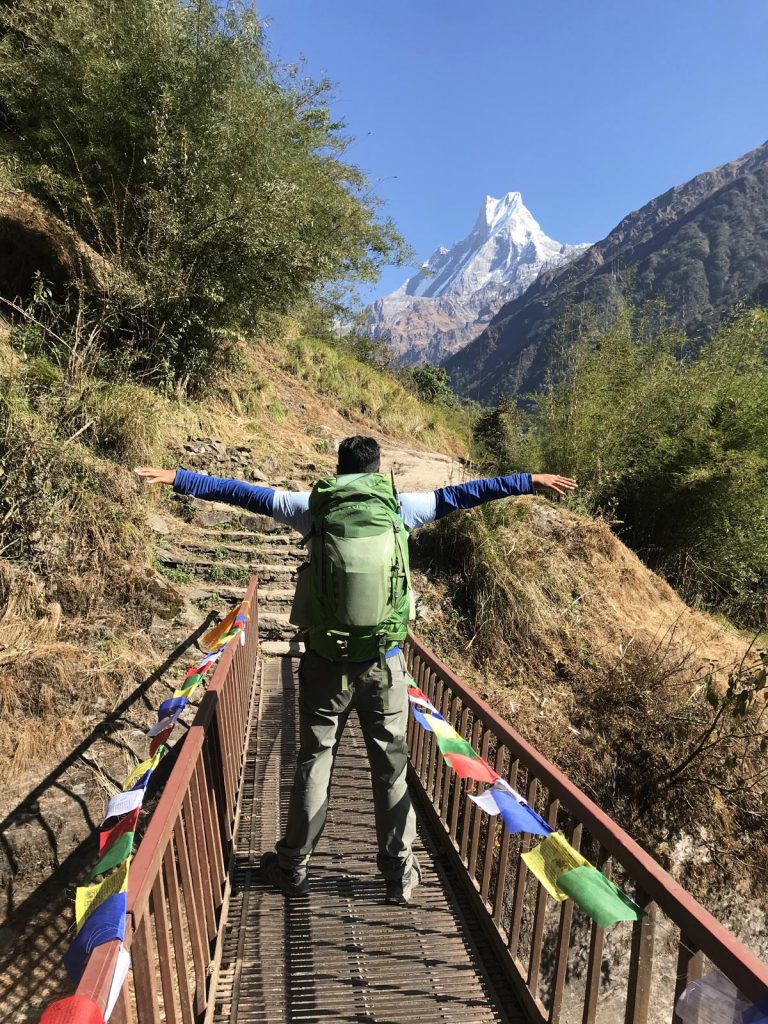
Consider documenting your journey through a journal or delving into books if you relish solitude. Embrace the abundance of time at your disposal; make every moment count.
12. Post-Trek Recovery:
Allow yourself adequate rest and recovery time after completing the trek to rejuvenate your body. Spending an extra day or two at the beautiful city of Pokhara is a great option before you finally fly back home.
Take time to reflect on your experience. Assess what went well and what you might do differently for future treks.
Embarking on the Annapurna Base Camp trek is a rewarding adventure that requires preparation, respect for nature, and a positive mindset.
By following these tips, you’ll not only ensure a safer and smoother journey but also create enduring memories of an unforgettable trekking experience.
Following these tips doesn’t just make the journey smoother; it amplifies the essence of your adventure.
The rhythm of the trek, the breathlessness of the altitude, and the laughter shared with strangers forge bonds that surpass geographical distances.
As you navigate through rugged terrains and soak in the Himalayan serenity, every sunrise and sunset will etch itself into your heart.
